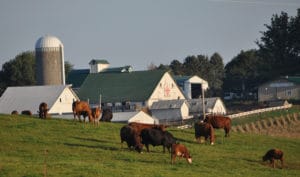The Des Moines Register
by Christopher Doering
 |
WASHINGTON – The number of organic farms in Iowa is increasing as producers expand to meet surging demand for the specialty products, the Agriculture Department said Thursday.
The state added 94 organic farms from 2008 to 2014 and had 612 organic farms last year, making Iowa the 10th-largest producer of the niche product in the United States. During the period, the value of organic commodities produced in Iowa increased 43 percent, from $72 million in 2008 to $103 million last year.
“(Iowa) is definitely playing a role in this sector of agriculture,” said Ginger Harris, a statistician with the USDA’s National Agricultural Statistics Service. “People find it profitable being in organics, so Iowa producers are meeting market demand.”
Corn was the largest organic crop in Iowa, with sales of $27 million, up 37 percent from 2008. Soybean sales rose 54 percent and milk 22 percent.
Organic food sales have surged as the public consumes more fruits, vegetables, pastas, dairy and meats raised and grown without most pesticides, genetically modified crops or antibiotics, among other stringent requirements.
While many producers have benefited from high prices, restaurants, grocery stores and other users of organics often face shortages that result in sky-high costs to purchase the products.
“It’s a really good market right now. I can sell everything I produce,” said Dan Beougher, who operates an 11-acre organic farm with his wife in Maxwell, Ia. “There is a big demand” for organic, locally grown products, he said.
The Beoughers both left jobs in the insurance industry to work full-time on their farm. They traditionally sell some of their fruits, vegetables, pork, chickens and other products to grocery chains Fareway and Hy-Vee. But this year, farmers’ markets and community-sponsored agriculture bought up all their products.
“People are wanting to get healthier foods, and they’re wanting to know where their food comes from,” Beougher said.
Nationwide, USDA said there were 14,093 organic farms that sold a total of $5.5 billion in products in 2014. Sales increased 72 percent from the 2008 estimate. Organic crops were responsible for 60 percent of sales, with the remainder coming from livestock and poultry products including milk, eggs and meats.
Joseph Reilly, administrator with NASS, said producers “expect to expand U.S. organic production in the coming years.”
Despite the boom in organic farming — organic food revenue has tripled the past decade to a record $36 billion last year — it remains a small fraction of the $630 billion in total supermarket sales reported in 2014 by Progressive Grocer Magazine.
Contact Christopher Doering at [email protected] or reach him at Twitter:@cdoering

